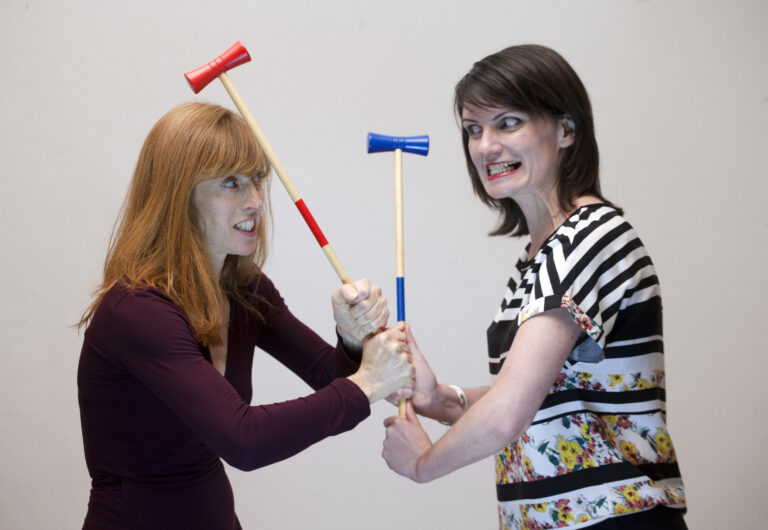
Building Bridges: Ten Tips for Forward Progress
How to break conflict and negotiation deadlock in the workplace
Building bridges is another one of those critical everyday skills that every professional needs. No one works in isolation in an organisation, and getting things done almost always requires the input or blessing of others. But that isn’t always easy.
The key reasons for strained relationships between colleagues and teams tend to boil down to two causes: conflicting needs or conflicting expectations.
Conflicting needs are usually easy to spot. One person sets out to achieve something that causes challenges for someone else. For example, a beneficial change in one area of the organisation may force unwelcome changes in another. This scenario is becoming much more common as we get further into the era of digital transformation and AI.
Conflicting expectations can be tricker to identify because they are based on our beliefs of how people should behave. These are born out of our own background, culture and experience, and one person’s expectations of behaviour can be vastly different to another’s.
Using our digital transformation example, a technology team may believe that colleagues should expect organisation processes to change in line with emerging technology. However, someone in a customer-facing part of the business may disagree with that. They may believe that too much technology diminishes the personal touch that customers appreciate.
Differing needs and expectations cause conflict in relationships, and deadlock in negotiations. The only way forward is for someone to budge, and that’s where building bridges comes in. It is up to you to find a way to reach the person on the other side of a seemingly impassable ravine.
Here are our top ten tips for building bridges to re-establish forward progress.
- 1. See the Situation Collaboratively
- 2. Step Back
- 3. Make the First Move
- 4. Find Something to Offer
- 5. Solve a Challenge
- 6. Focus on Building Rapport
- 7. Teach Me
- 8. Admit an Error
- 9. Add a Personal Perspective
- 10. Show Your Gratitude
See the Situation Collaboratively
Two people in conflict or negotiation deadlock often see themselves as distant from each other, but this couldn’t be further from the truth. The dispute gives them a strong relationship that binds them together, albeit not one they probably want. When building bridges, always see the other person as your collaborative partner. The challenge will only be resolved if you both work together to find a solution.
Step Back
Our subjective experience of life means we tend to assume our thinking is correct, and that people on the other side of conflicts and negotiations are incorrect. This is why we often dig in and wait for the other person to start seeing the error of their ways. Therefore, the first question to ask is, “Am I right?” Building bridges demands understanding, so take a step back and consider the situation objectively from the broadest range of perspectives.
Make the First Move
If you turn out to be correct, then you cannot expect the other person to acknowledge it. Even if someone is fully aware of their error, they may not wish to lose face in front of you or colleagues. If you want forward progress, then you need to make the first move. The person building bridges is the one who genuinely wants to resume forward progress. You may need to set aside clarifications of right and wrong to achieve this.
Find Something to Offer
Deadlock is when no one wants to concede, and this damaging position must be broken so everyone can move on. The number one approach when building bridges is to find something the other person needs that you can provide, such as assistance or resources. Ideally, look for a need that directly relates to the conflict or negotiation, but something to do with another aspect of the person’s role may be just as valuable to them.
Solve a Challenge
Another approach for building bridges is to look for a challenge that the person is facing that you can solve. People like it when their lives are made easier, and often feel an urge to reciprocate. You may even identify a challenge that you both share, which is a perfect way to build a closer working relationship. It also positions you as allies, which can help to alleviate tension.
Focus on Building Rapport
Building bridges is about building rapport, for which being able to offer something of value is a crucial first step. Think of rapport-building as a skill that benefits from a strategic approach based on an understanding of the person’s needs and expectations. Try to create an alignment of interests and personality, and support it with all of the advantages of effective communication.
Teach Me
Break your own subjective perspective of situations by asking questions and actively listening to the answers. However, don’t restrict your questions to just the conflict or negotiation itself. Ask the other person to explain more about their role and team so you can gain a stronger understanding of their expectations and the reasons they disagree on issues. As you listen, identify clues that help you find something of value to offer or a challenge you can solve.
Admit an Error
If you discover that part of your position is wrong, then admitting it can have many benefits when building bridges. It shows you are aware of your actions and don’t use deception to win disagreements. That may be all it takes to introduce a new level of trust and transparency into the relationship. However, be firm about what you are apologising for, and what you still consider to be the central issue that needs to be addressed.
Add a Personal Perspective
Show Your Gratitude and Share Success
Don’t see building bridges with someone as the end of a conflict. See it as the start of a strong business relationship that adds immense value to your sphere of influence. People love to be praised, so be grateful for their contribution to resolving the dispute. Even better than gratitude is sharing success in an official capacity. If ending the dispute achieves something for the organisation, then formally add their name to the list of contributors. They will enjoy the added reputational value that comes with being seen as someone who champions forward progress.
Building Bridges in the Workplace
Impact Factory runs
Open Conflict Management Courses
Tailored Conflict Management Training
and personalised
One-to-One Conflict Management Coaching
for anyone who wants to improve the way they Build bridges






